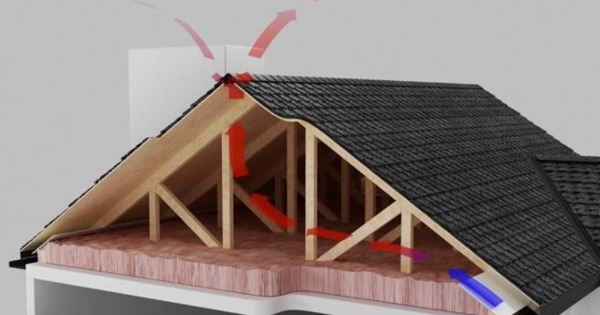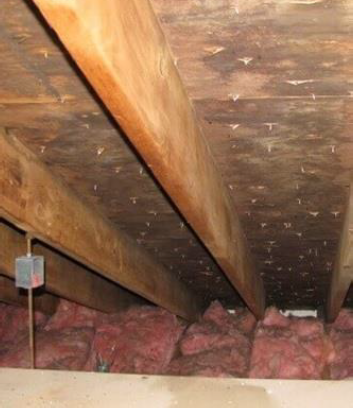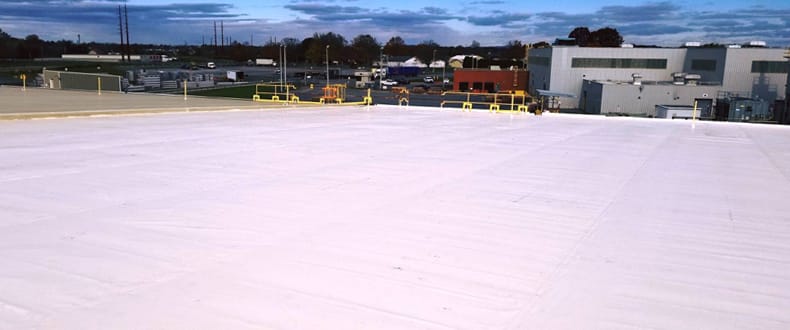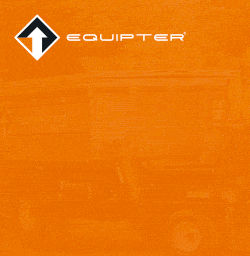Avoiding Moisture With Proper Ventilation

By Quarrix Building Products.
Learn how to create well-designed ventilation systems to maintain long-term structural integrity.
Moisture is one of the greatest financial threats to homes and buildings. Moisture can enter the structure of a house or building through heavy rain and snow fall, wicking, capillary action and condensation, and can cause a slew of costly problems. For instance, framing members will lose their structural integrity, walls and decking can experience premature deterioration and condensation in an attic can cause leaking into the house or building.
The risk of encountering these issues in any home is typically highest on the roof and within the attic, so it’s critical to have a well-designed roof and attic ventilation system (these terms will be used interchangeably) in order to minimize the amount of moisture that is retained there.
Where does moisture originate?
The first is bulk water from heavy rains and extreme weather. Bulk water paired with high winds can spell trouble for a roof. While a roof may survive through a storm without letting moisture in, water can linger and track along various materials both horizontally and vertically on the roof until it finds its way into the structure. This wicking and capillary action will destroy a roof if protective measures are not taken during the roof installation process to minimize moisture infiltration. Low-slope roofs are especially prone to damage because of their lessened ability to shed water.

A second, and often the most overlooked moisture source, comes from within the living space. Between showers, dishwashers, washing machines, plants and even the occupants themselves, a large amount of moisture is produced within the living space. According to the USDA, a standard household produces up to six gallons of moisture each day. This moisture is absorbed into the air and rises towards the attic via the Stack Effect, which is the principle of hot air rising, and as that hot air rises it carries with it some of the moisture produced in the living space. The moisture then enters the attic through leaks in the top-level ceiling in places like attic access points, recessed lights that are not properly sealed, attic bypasses and ductwork and any other place where the living space is not properly sealed off from the attic.
Preventive steps to reduce moisture
A roof ventilation system that will mitigate moisture is the best strategy to reduce the damaging effects of moisture. To have a well-designed roof ventilation system you must have an even balance between intake and exhaust ventilation without this balance the system will not work most effectively. If there is a heavy imbalance between these ventilation sources, the even airflow from the intake to exhaust vents can become disrupted and in some cases you may see a reverse effect where air is drawn into the attic through the exhaust vents.
The second critical element of a well-designed roof ventilation system is having the correct amount of ventilation for the attic space. Static ventilation is measured in Net Free Ventilation Area, often referred to as NFA or NFVA; this measurement denotes the capacity of airflow in a particular vent. The amount of NFA required will be driven by the size of the attic space and should be follow a ratio of 1 square foot of ventilation for every 150 or 300 square feet of attic space depending on the applicable building code and it should be evenly distributed between intake and exhaust ventilation to create a balanced system. With a balanced system between intake and exhaust, and the proper amount of ventilation for the attic space, air will naturally cycle through the attic, flushing out moisture-laden air that would have created some costly problems.
Is attic ventilation needed for sealed roof decks?

The answer is Yes! And, you could argue that ventilation may be even more critical for sealed attics. The IBHS Research Center found that many typical roofing underlayments and felts blow off the roof during extreme weather events and have proposed sealing the roof deck to reduce the chances of moisture infiltration when this happens. At the same time, when you seal the roof deck, you’re removing places for heat and moisture to naturally release over time. This is critically important to remember because moisture is created every day from within the house due to showers, cooking, laundry and other activities. With the typical household creating six gallons of moisture a day, that's alot of moisture needs to be immediately exhausted or it rises to the ceilings. This stale air that’s rising into the attic can lead to moisture problems if you don’t have a roof ventilation system that’s designed to generate natural air movement and keep the underside of the roof deck dry. When selecting ventilation products to use in sealed deck applications, it’s important to choose products that have undergone testing and hold certifications that confirm their ability to withstand extreme weather events. When these vents are installed properly, they won’t compromise the system’s ability to prevent moisture infiltration in extreme weather and will help extend the life of the roof.
A well-designed roof ventilation system is your insurance policy for that time when moisture does find its way in (and it will) – it will cycle the stale air out thanks to the natural convection system that is created by the balanced system and eliminate that destructive moisture.
Learn more about Quarrix Building Products in their RoofersCoffeeShop® Directory or visit www.quarrix.com.
Original article source: Quarrix Building Products























Comments
Leave a Reply
Have an account? Login to leave a comment!
Sign In